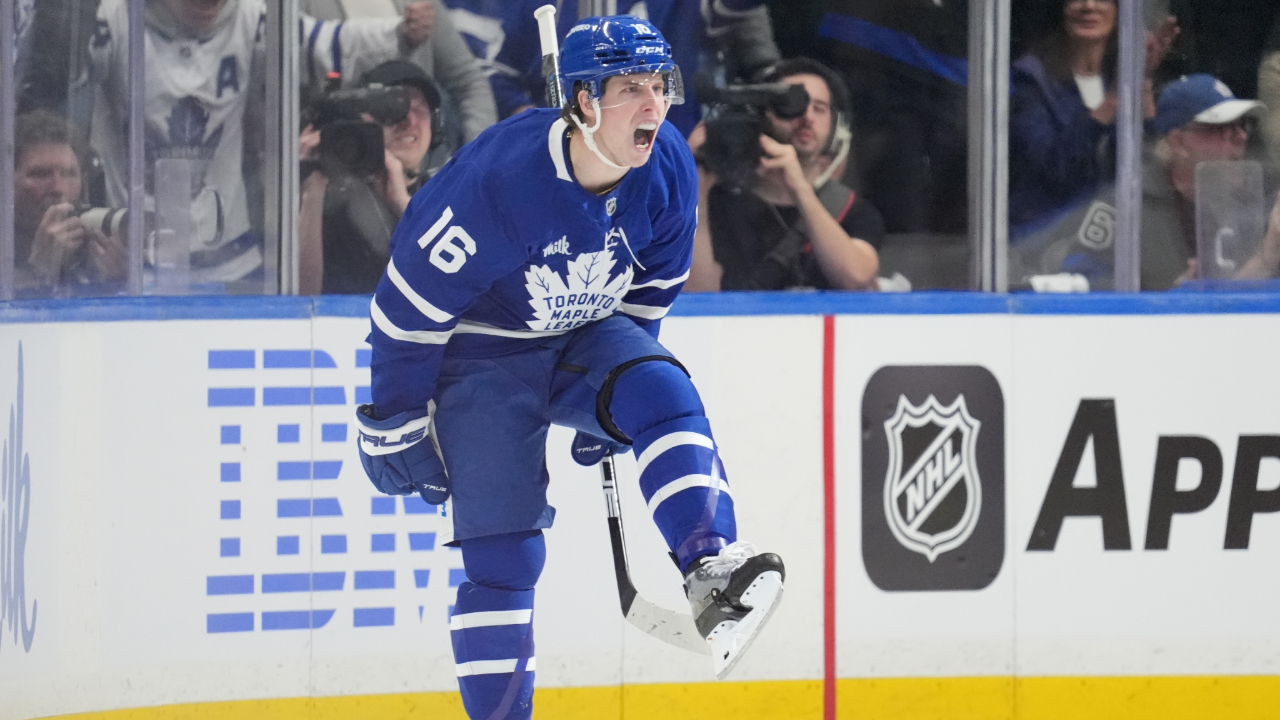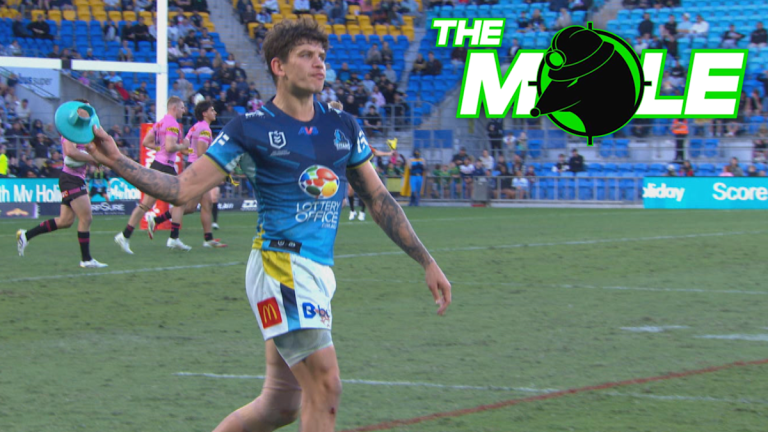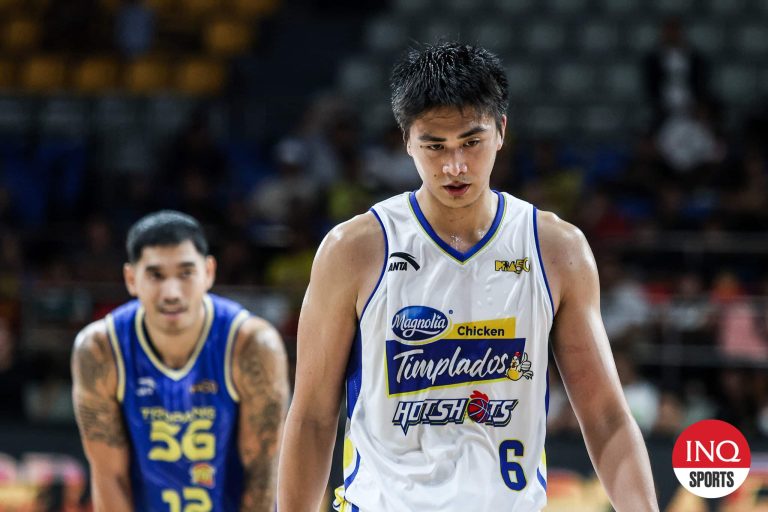The Friday Four is a collection of thoughts and information on some intriguing player storylines from around the NHL. On deck this week is:
• Eighth year could be key in Marner’s next deal
• Oilers must address goaltending this off-season
• Who will be the last player standing from the 2003 draft?
Barring a major turn of events, it certainly seems like Mitch Marner’s time with the Toronto Maple Leafs has come to an end. That’s probably best for both sides at this point. The Maple Leafs clearly need a roster shakeup and a change in DNA and while Marner is an elite talent that every team would covet, it hasn’t translated to what matters most in Toronto — playoff success. Marner has every right to search for greener pastures. That’s business.
That doesn’t necessarily mean the two sides can’t work together moving forward to get Marner’s next deal over the finish line, though. Only Toronto can give Marner eight years of term on this next contract, something that could be critical for the 28-year-old and his new team coming to terms. Theoretically, Toronto could sign and trade Marner after inking him to an eight-year deal. Why would Marner and the Maple Leafs be willing to work together at this point, you ask? Well, it could end up being beneficial to all parties involved.
What does Marner get out of an 8-year deal?
We recently heard whispers that there’s a possibility Marner could entertain signing for a shorter-term like four years. Be that as it may, the most total money Marner can get on this next contract is almost certainly on an eight-year term. Sure, he could get a higher AAV on a seven-year pact, but the total money likely won’t exceed what Marner could get with an eight-year commitment.
We’ve heard lots of numbers floating around for what Marner might get, with rumours of some teams willing to go up to $14 million. That seems like a lot, especially when Mikko Rantanen just got 8 x $12 million, but there are lots of other factors to consider, like how much cap space a team has, state taxes and a ballooning market for Marner, who is far and away the class of free agency.
Let’s say for argument’s sake Marner has 7 x $14 million from a team on the table. That works out to be $98 million over the lifetime of the contract. But if Marner could get $14 million per season over seven years, it’s reasonable to think someone would be willing to pay him $13 million per campaign over eight years. Now an eight-year deal with a $13 million AAV works out to be a total of $104 million, which is $6 million more than the aforementioned seven-year contract. To get Marner to $104 million over seven years, some team would have to go all the way up to $14.9 million per season. Not impossible, but highly unlikely.
It’s easy to say Marner could recoup that money later in his career, but there are no guarantees. He’ll be 35 when a seven-year contract ends and Marner would have to make at least $6 million in that age 35 season in this above scenario to come out even. A lot can happen in seven years as it relates to injuries, player decline, etc., so to assume Marner will get a $6 million contract at age 35 is risky. It could happen, but far from a sure thing. At Marner’s age, financially it would make sense to secure the most guaranteed money now and then anything after that is gravy.
What does Marner’s new team get?
Depending on where Marner lands, getting the AAV down as low as possible could be critical. Teams like Anaheim and Chicago have tons of space and might not be as concerned with the cap hit, though a team like Vegas, who Marner is rumoured to have interest in, will feel the pinch a little bit more. Marner would be a perfect fit with the Golden Knights because they are deep down the middle and on defence, but thin on the wing. If Alex Pietrangelo lands on LTIR it may not end up being as much of an issue, but without some sort of cap relief, things will be tight.
Vegas, or any team that has a chance at the Cup, is probably going to be close to the cap and would benefit from an eighth year to reduce the AAV. If Marner can get the same total money over eight years that he would with seven, but with an AAV maybe a million or more lower, that’s going to really help a team like Vegas. The Golden Knights are always looking for creative ways to get better, so having more flexibility down the line come the trade deadline will be important to them. There’s also the possibility this could be worked out in a sign-and-trade before July 1, ensuring Vegas or whatever team gets Marner, doesn’t have to engage in a bidding war or risk losing him when free agency opens.
If Marner is targeting a contender to have a good chance at winning a Stanley Cup, a lower AAV could be the difference in him securing a deal at his preferred destination.
For handling the logistics of a sign-and-trade, the Leafs will want some type of asset back from Marner’s new team. Toronto could trade his rights to a team before July 1 as well, but that new team could still only give Marner a seven-year deal. The only way for Marner and another team to get an eight-year contract is if the Maple Leafs sign him first and then trade him.
Getting anything back for Marner at this point would be a win for Toronto. You could argue they mishandled this a couple of summers ago before Marner’s no-trade clause kicked in, but that is neither here nor there at this point. Potentially bringing in a second or third-round pick is better than nothing, even if Marner is worth far more in a typical trade situation. The Leafs need more draft capital to either add to their prospect pool or use in deals for future trade deadlines, so every little bit helps.
The other thing Toronto could do is try and get creative for what they ask in return to fill some of their needs at the forward position. It’s typically a draft pick, but for a team like Vegas that may be forced to offload a player to make room for Marner, they might be more amenable to this avenue. Would Vegas ever consider giving up someone like William Karlsson or Ivan Barbashev to clear space instead? That probably depends on the Pietrangelo situation and what they could get on the trade market for each player. If the choice is between giving the Leafs a second-round pick let’s say, but Vegas can’t get more than that back in return for either Karlsson or Barbashev if it comes to that in a separate deal, they could be more comfortable giving up one of them instead.
Of course, Vegas could try to clear cap space in other ways but keep in mind, this is a team that gave up Max Pacioretty and Marc-Andre Fleury for nothing in the past to free up cap room. If it means securing Marner, anything is possible.
The Edmonton Oilers came up just short again in their quest to capture hockey’s ultimate prize, so now the attention inevitably turns to what they can do in the off-season to get themselves over the hump.
Priority one has to be the goaltending position, as Stuart Skinner and Calvin Pickard performed admirably at times in the playoffs, but it’s hard to imagine that tandem being good enough to help the Oilers to a Cup. Skinner and Pickard combined for an .888 save percentage in these playoffs and that’s simply not good enough. Even with Connor McDavid and Leon Draisaitl, goaltending like that is really hard to overcome.
You can’t put the Oilers coming up short again all on the goaltending, but it was one of the only areas of Edmonton’s game that was lacking. All things considered, the defence corps held up pretty well, especially without Mattias Ekholm for a large majority of the playoffs. Evan Bouchard was over a point per game once again, Darnell Nurse was much better this spring and John Klingberg and Jake Walman took on significant minutes at times. They got some key secondary scoring, too. Connor Brown, Kasperi Kapanen and Vasily Podkolzin combined for 11 goals during Edmonton’s run.
You have to wonder where this Oilers team would be with even league average goaltending. In the playoffs, one extra save or win here and there can make all the difference. Five of Edmonton’s wins in the post-season were in games where the opposition scored at least four goals, so too often they’ve had to overcome mediocre goaltending. Both Skinner and Pickard are under contract for one more year and it will be no easy task to upgrade. The free agent group of goalies is thin and quality netminders available in a trade are few and far between. Maybe Edmonton could take a look at John Gibson again, but the Anaheim Ducks goaltender’s injury history makes it a risky move. That said, the Oilers may have no choice but to take a chance at this point.
And then there were three. After Marc-Andre Fleury recently retired, that leaves Ryan Suter, Brent Burns and Corey Perry as the only remaining active players from the great 2003 draft. That was 22 years ago, so the fact that anyone is still going from that draft is pretty remarkable. Perhaps more impressive is their durability, as Suter and Burns played all 82 games this year, while Perry played 81.
If you had to pick one that was going to outlast everyone else, you’d have to go with Perry. Both Suter and Burns are really starting to slow down, with the Carolina Hurricanes defenceman notching only 29 points this season. That was his worst total over a full campaign since 2006-07. Suter still got decent minutes for the St. Louis Blues this year, but it’s becoming harder to trust him. He had a career-high 64 giveaways in 2024-25, 18 more than he had in any other previous season.
Perry, though, is still very effective and scored 19 times in 2024-25 before adding 10 more in the playoffs, which included a few timely and clutch goals. His game is also built really well for the post-season and he played quite a bit with McDavid this spring, so even if his foot speed isn’t what it once was, Perry still has the smarts and the savvy to play with high-end talent. Plus, he’s made the Cup Final in five of the past six seasons, which can’t hurt his resume.
All three will be UFAs on July 1 and Perry will surely get a contract from a competitive team looking for depth if he doesn’t re-sign with the Oilers. Burns could be coveted on a cheap deal because he can quarterback a power-play unit and I could see Suter perhaps going the PTO route to a situation where he thinks he can crack the team. However, my money is on Perry to be the last man standing. This post-season really showed everybody what he’s still capable of and how much he has left in the tank. Perry shines the brightest when the games matter most.
Evgeni Malkin, Pittsburgh Penguins
The end of an era could be coming sooner rather than later in Pittsburgh, as Josh Yohe of The Athletic reported this week that the Penguins aren’t expected to offer Evgeni Malkin a contract following the 2025-26 season.
If that is indeed the case, it brings up a few interesting questions. Would Malkin retire from the NHL after next season? Or would he leave the Penguins and continue his career with another franchise? And maybe most intriguing, would he consider a move midseason if the Penguins once again fall out of the playoff picture? Malkin’s production definitely dipped last year, but you’d have to think somebody would be willing to give him a chance for one more playoff run based on what we saw from veterans Perry and Brad Marchand this post-season.
You might remember Malkin started the 2024-25 campaign on a tear, scoring 11 points in four games back in mid October. There’s no way he can keep up that pace for any significant amount of time but if you’re able to manage his minutes so Malkin stays fresh, he still has the potential to wreak havoc in a playoff series.
Malkin probably doesn’t get enough credit for the career he’s had. That’s what typically happens when you play with someone like Sidney Crosby. Draisaitl is in a similar situation with McDavid. When you have a generational talent on your roster, it’s hard to fully appreciate the greatness of anyone else around them. With a Calder, Conn Smythe, Hart, Ted Lindsay, two Art Ross trophies and three Stanley Cups, Malkin is a first-ballot Hall of Famer and if the 2025-26 season is his last, it’s been a career that few can rival.







